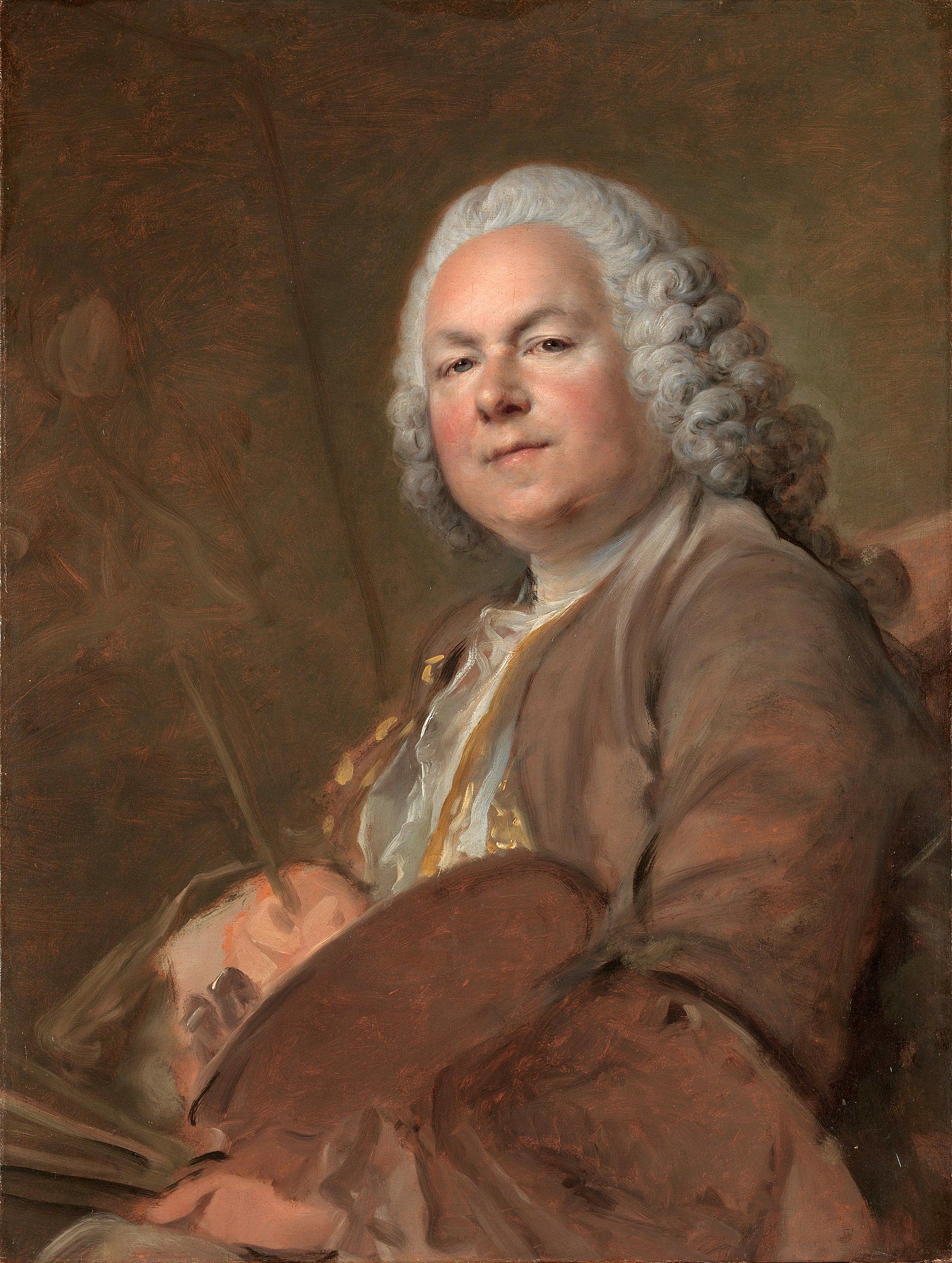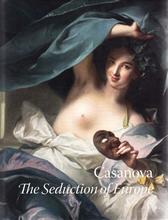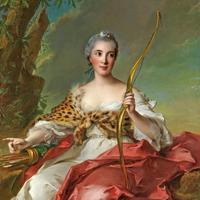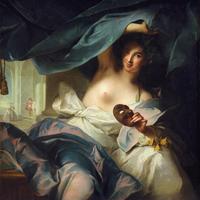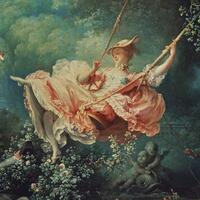More about Jean-Marc Nattier
- All
- Info
- Shop
Works by Jean-Marc Nattier

Editor
Jean-Marc Nattier is known today for being the best rococo portrait artist in mid-18th century France, but his life was full of regrets.
Sure, he may have made a splash by reviving the allegorical portrait, a form that would be taken up by artists such as Francois Boucher and Angelica Kauffman, but he was never able to paint what he wanted to, and that is indeed a sad fate.
Most of what we know about Nattier comes from a biography written by his daughter, Marie-Catherine-Pauline Tocqué, who married artist Louis Tocqué, so we have her to thank for this tale of woe. Nattier was born in Paris in 1685 to artistic parents, a father who was a member of the Royal Academy, and a mother who was a miniaturist. Things were tight at the Nattier household after Jean-Marc’s mother became paralyzed at the age of 22, but his father spared no expense in giving his children the best art education they could afford.
Trained by his father as well as Jean Jouvenet, Nattier went on to study at the Academy where he knocked 'em all dead, winning a prize at the age of 15 for his copies of some battle scenes by Charles LeBrun. While still a student, he prepared engravings for his father and made drawings for engravings to be made after the Marie de Medici cycle by Rubens. He even won the praise of Louis XIV for a drawing he did of Hyacinthe Rigaud’s famous portrait of him, though it’s hardly surprising that Louis XIV would praise a picture of himself. After his father died, Nattier continued to study and was even approached with an offer to travel to Rome by the Duc D’Antin, where he could study as pensioner to the king at the French Academy there. But Nattier decided not to go because he was already starting to get commissions where he was. He regretted it for the rest of his life. (Moral of the story: if someone is willing to pay for you to go to Rome, you do it.)
In what would also become a somewhat regrettable affair, Nattier painted Russia's Peter III and Catherine the Great. The year was 1718. Nattier was officially a member of the Academy, recognized as a history painter. At the time, the Czar was in the Netherlands, seeking artists to accompany him back to St. Petersburg, and Nattier travelled to Amsterdam to work for him. The emperor asked him to paint portraits of Russian dignitaries and himself, and one of the Czarina, over which she was in raptures. But while still working on Catherine’s portrait, Nattier told Peter that he would not be traveling to Russia with him. Peter III was so angered by this, he took the unfinished painting of Catherine and, in a classy move, left without even paying Nattier for it. Nattier was happy to remain in France, but it remained a sore point.
From there things went poorly, but not just for Nattier. Much of France got swept up in the Mississippi Bubble, one of the very first recorded financial bubbles in history. Behind this economic crash was one John Law, a Scottish financier, adventurer, and playboy who was a friend of the French Regent, the Duc D’Orleans. Law established the Banque Générale, a bank with the power to issue notes, in 1716 and then went on to establish the Compagnie d’Occident, obtaining the exclusive rights to develop the French territories in America surrounding the Mississippi river valley. He eventually gained control over all the French colonies in North America and the West Indies and renamed his corporation the Compagnie des Indes. At the same time, Law become comptroller of France, minting money and collecting taxes. He merged the two entities under his control, intertwining France’s finances with that of his company, and while this precarious situation prospered and created a boom for a while, the excessive issuing of paper money stimulated too much inflation and led to a major crash in 1720 when the value of shares took a nosedive.
If you asked a gymnasium full of French citizens who among them had been personally victimized by John Law, Nattier would have been one among many to raise his hand. At the height of the boom, Nattier was painting portraits for Messieurs Couturier and Desvieux, who were directors of the Compagnie des Indes. They urged Nattier to sell his drawings of Rubens’ works to John Law in exchange for stock in “the system”, as it was called. Nattier followed the advice and received 18,000 livres worth of bank notes. When the bubble broke, the money was worthless and Nattier’s drawings were carried away by John Law’s son. (John Law himself fled France.)
Finances continued to be a problem. His family was slammed with a lawsuit due to the criminal behavior of his brother, who died by suicide in the Bastille while he was awaiting sentencing. And his marriage to the beautiful Mademoiselle de Laroche didn’t help. Her father had been a royal adviser and lived in comfort, so naturally Nattier assumed he would come into some money by marrying her, but it turned out that his wife’s father had lost all his money in the Mississippi Bubble, too. Nattier received no dowry and had to support his wife and brood of children alone.
And so, he turned to painting portraits rather than his one true love, history painting, to make ends meet. People always needed portraits, and Pre-Revolutionary French society was especially prone to the kind of self-love that leads to lots of portrait commissions from the wealthy. It was a good thing for Nattier, because he excelled at painting ladies, possessing that special talent of beautifying his sitters while still somehow retaining accuracy. An 18th century photoshop artist, Nattier could transform the homeliest matrons into goddesses.
Almost always wearing a close, powdered hairdo sprinkled with flowers, his sitters are usually depicted in one of three standard formats, either a bust, a half view, or the grander ¾ view. He had two main styles. In the first, he painted his sitters in full contemporary courtly dress, taking special care with the satin fabrics and other luxurious accoutrements. In the second (and his favorite) style, he painted the sitter in the guise of a classical goddess, surrounded by the goddess’s attributes and posed before evocative palatial columns. This latter style became known as the allegorical portrait, and was a kind of compromise between history painting and portraiture. It was a way for Nattier to infuse his portraits with some of the elements of history painting, which the Academy considered nobler than portraiture, while still lining his own pockets.
The years 1730-1760 saw the height and decline of his fame as a portraitist. Along the way, Nattier became a favorite court artist, painting the royal family of King Louis XV as well as the one and only Madame du Pompadour. He rode his successes for as long as he could, but his wealth never matched his fame, and he had the sad misfortune of outlasting his own fashionability as tastes ran to Boucher. His son, whom he sent to Rome to study painting, drowned himself, and Nattier’s death followed a few years later after suffering an unknown illness. Whether or not he could ever have been a successful history painter is debatable, as his few attempts at the genre are less than convincing. But maybe, just maybe, if someone had given him a chance to practice, he could have surprised us all. Either way, he pioneered a new kind of portrait that pretty much captures the spirit of his age--sumptuous, refined, neoclassical, and just a little bit vain.
Sources
- Baetjer, Katherine. “Madame de Maison-Rouge as Diana.” Last modified 2011. https://www.metmuseum.org/art/collection/search/437183
- Baetjer, Katherine. “Madame Marsollier and Her Daughter.” Last modified 2010. https://www.metmuseum.org/art/collection/search/437181
- Bazin, Germain. Baroque and Rococo. London: Thames & Hudson, 1964.
- “Jean-Marc Nattier.” Encyclopedia Britannica. Last modified March 10, 2018. https://www.britannica.com/biography/Jean-Marc-Nattier
- “Mississippi Bubble.” Encyclopedia Britannica. Last modified November 7, 2007. https://www.britannica.com/event/Mississippi-Bubble
- “Jean-Marc Nattier.” J. Paul Getty Museum. Accessed April 10, 2017. http://www.getty.edu/art/collection/artists/455/jean-marc-nattier-frenc…
- Tocqué, Marie-Catherine-Pauline. “Mémoires Inédits.” In Nattier: French School. Boston: Bates & Guild, 1902.
Featured Content
Here is what Wikipedia says about Jean-Marc Nattier
Jean-Marc Nattier (17 March 1685 – 7 November 1766) was a French painter. He was born in Paris, the second son of Marc Nattier (1642–1705), a portrait painter, and of Marie Courtois (1655–1703), a miniaturist. He is noted for his portraits of the ladies of King Louis XV's court in classical mythological attire.
Check out the full Wikipedia article about Jean-Marc Nattier

